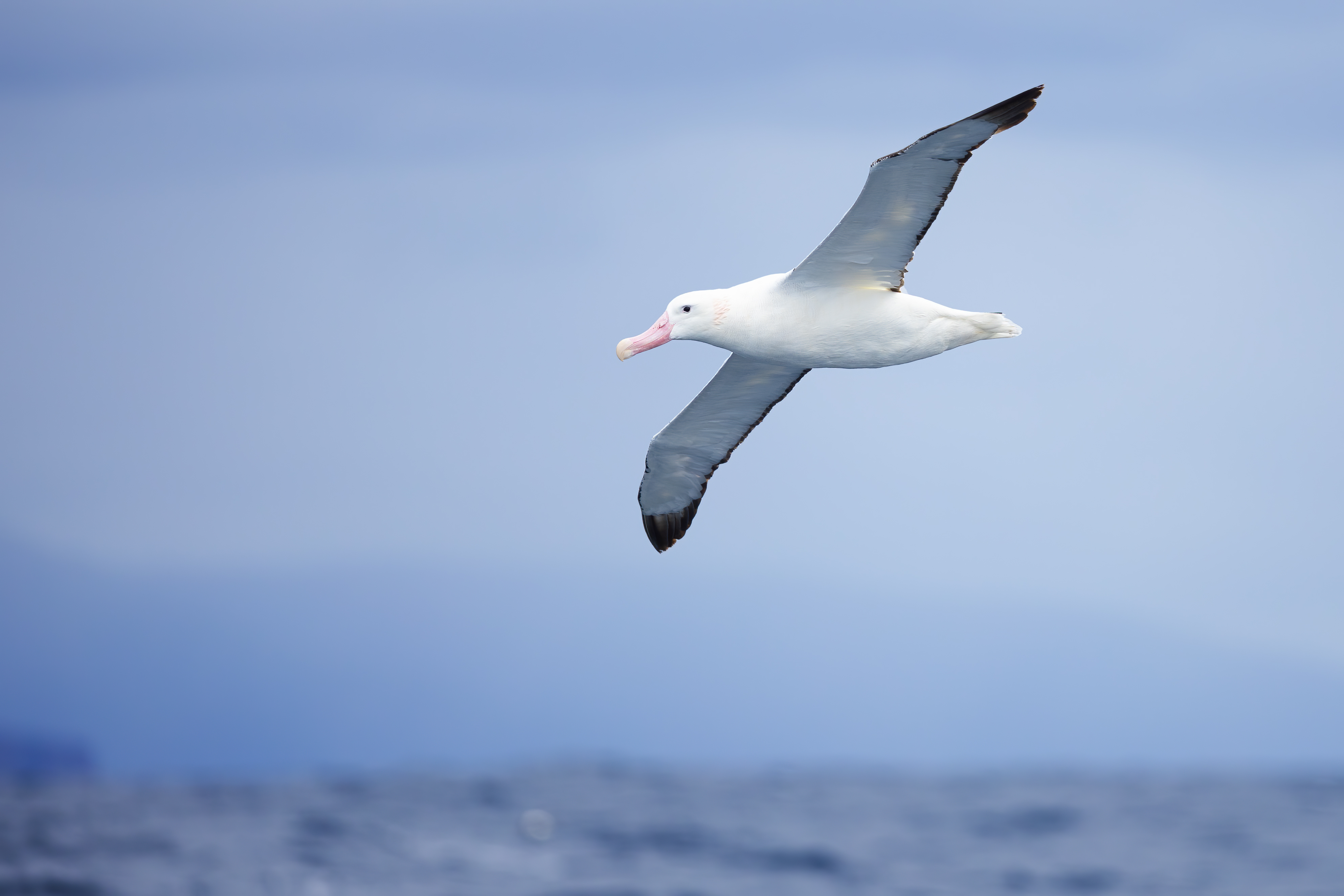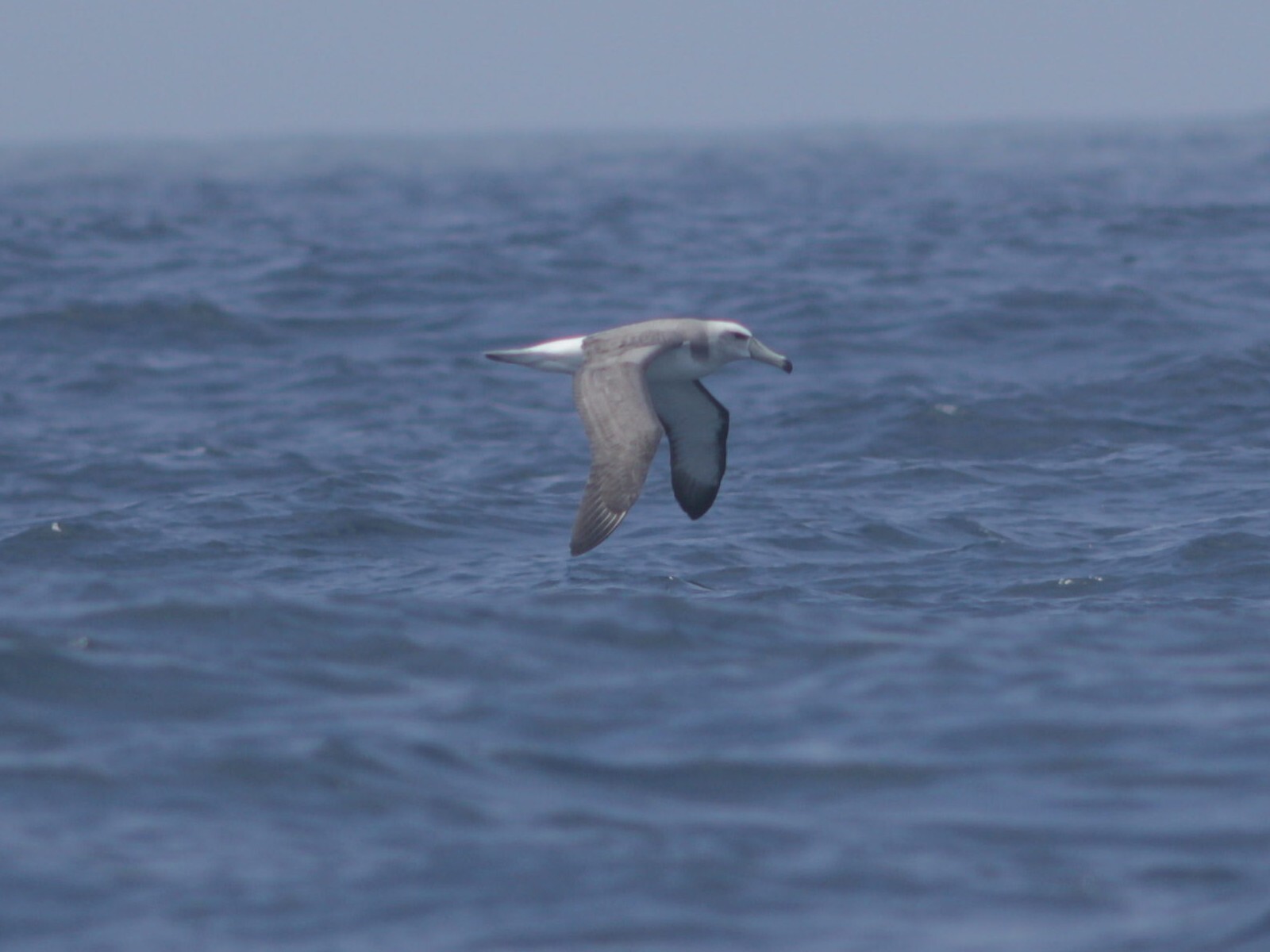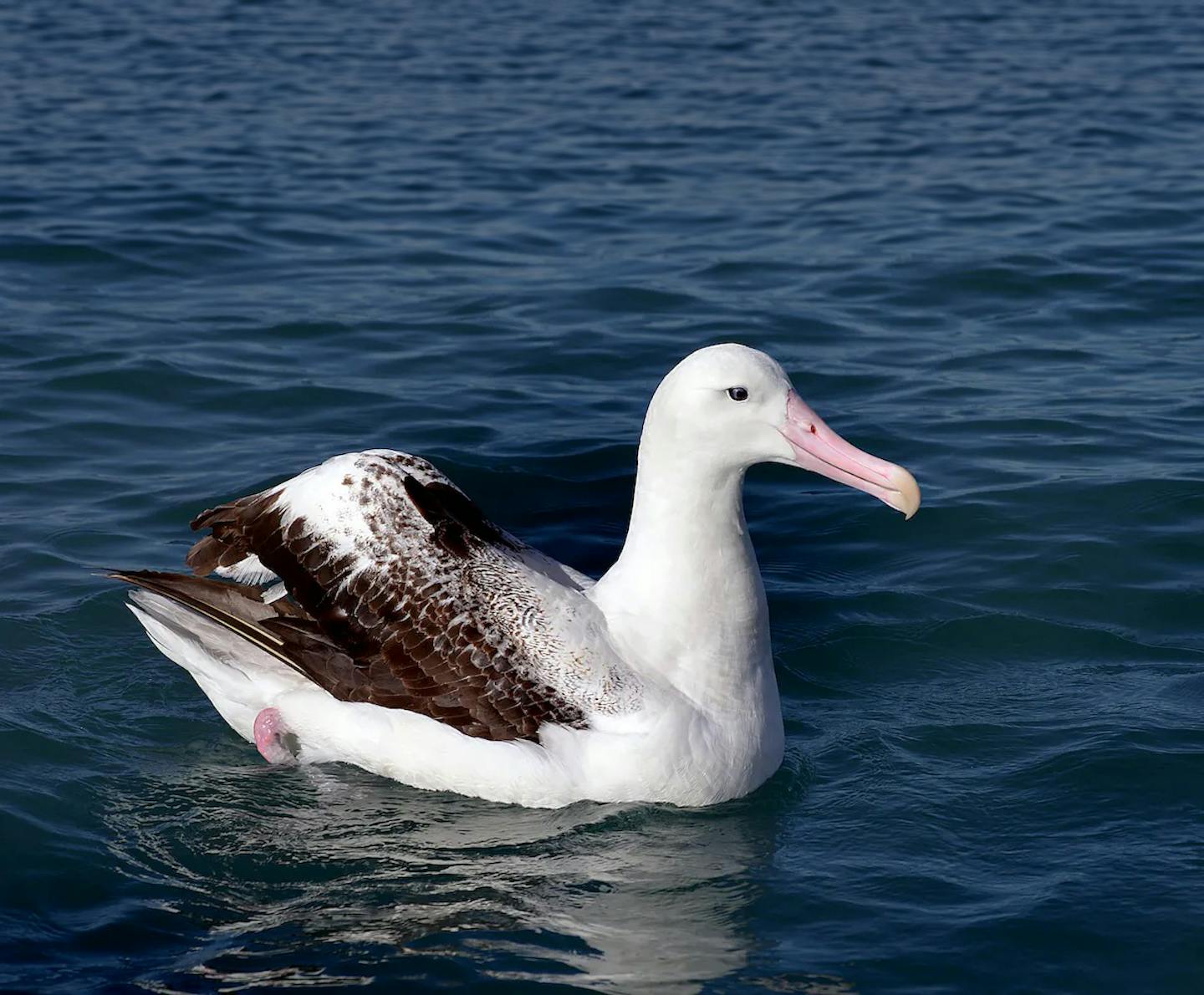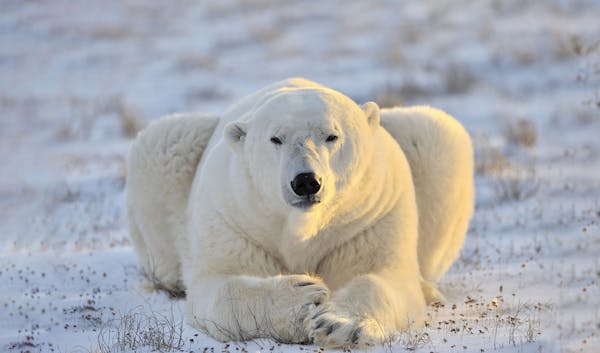The snowy albatross: Masters of the Southern Ocean skies
- Nature Conservation
- Iconic Species
- Land Conservation
- Wildlife
- Birds
- Antarctic Continent & Islands
- Antarctica Realm
One Earth’s “Species of the Week” series highlights an iconic species that represents the unique biogeography of each of the 185 bioregions of the Earth.
The snowy albatross is a majestic seabird also known as the white-winged albatross, goonie, and formerly the wandering albatross.
Scientifically, the snowy albatross is aptly named Diomedea exulans. Inspired by the Greek mythological figure Diomedes, whose companions were transformed into birds. The species name exulans or exsul is Latin for 'exile' or 'wanderer,' describing their far-ranging flights.
Its remarkable life spent flying over the Southern Ocean, size, and striking appearance have captivated Polynesian island dwellers and navigators for generations. Truly the essence of an iconic species, the snowy albatross is one of the largest, arguably the best-known, and most studied species of bird in the world.

The snowy albatross is the iconic species of the Subantarctic Indian Ocean Islands Bioregion (AN3)
The largest wingspan of any living bird
The snowy albatross has a predominantly white plumage, tinged with black on the wings, featuring a distinctive wedge-shaped tail and a large pinkish bill. Juveniles have a primarily dark plumage that transitions to the iconic white as they mature.
It is the largest of twenty-one albatross species and has the greatest known wingspan of any living bird, reaching up to 3.6 meters (12 feet).
Ecological role in helping balance the marine ecosystem
These skilled aviators have a diverse diet that includes fish, cephalopods, jellyfish, and occasionally crustaceans. When hunting, they make shallow dives and also partake in scavenging, consuming carrion from penguins and seals.
The snowy albatross helps balance the ocean's health by controlling marine populations. Their scavenging habits aid in the nutrient cycle, making them vital for maintaining ecological equilibrium.
The commitment to their offspring is evident in the sheer quantity of food required during the rearing period, with chicks devouring up to an astonishing 100 kilograms (220 pounds) over approximately 300 days.

A majestic snowy albatross in flight over the Southern Ocean, showcasing its impressive wingspan and elegant white plumage. Image Credit: JJ Harrison, WikiCommons.
A life in flight with a remarkably long-distance range
Snowy albatrosses spend most of their lives in flight, landing only for breeding and feeding their chick. Their foraging trips are extraordinary, lasting 50 days at a time. During these expeditions, they travel in small groups, sometimes converging in large feeding frenzies around fishing boats.
They are one of the most far-ranging birds. Certain snowy albatrosses have been documented to traverse the Southern Ocean up to three times in a single year, spanning distances over 120,000 kilometers (approximately 75,000 miles).
Years out on the sea before settling down
Following a unique life cycle, young albatrosses embark on extensive sea voyages lasting 5–10 years before returning to their natal islands to breed with a lifelong mate.
The breeding islands are in the sub-Antarctic and Antarctic regions between latitudes 46° South and 56° South, with most pairs in Iles Kerguelen, South Georgia, and Macquarie Island.
The courtship and breeding dance
The breeding season is a captivating display of courtship and territoriality as they become gregarious and engage in vocalizations and displays.
These include bill-touching, bill-clapping, pointing to the sky, trumpeting, head-shaking, the "gawky look," and the "ecstatic" gesture.

An adult snowy albatross riding the waves of the Southern Ocean. Image Credit: JJ Harrison, WikiCommons.
From nesting, incubation, to fledging
Breeding occurs once every two years, with both parents actively involved in the whole process, which begins with building a nest of mud and vegetation on an exposed ridge. The single large egg is laid in December or early January and is incubated by the parents in alternating shifts for about 11 weeks, with most hatching in March.
The chick takes another 7-9 months to fledge. As the full breeding cycle takes 10-12 months, the adults then take a sabbatical year to complete their molt (shed of feathers) before attempting to breed again. Immature birds return to colonies when 6-10 years old and typically do not start breeding until 11-15 years old.
Symbolism and cultural significance in Māori tradition and maritime lore
Among the Māori, the species is known as the sacred Taroa. Woven mats depict Nga Roimata Toroa, the tears of the albatross, as it wept for its distant homeland or breeding ground. This reference to tears is based on the remarkable ability of the albatross to drink ocean water by first expelling the salt out of its beak.
To Indigenous peoples and sailors alike, the snowy albatross has long been a symbol of good omen and the embodiment of the spirits of lost mariners. The bird's ability to navigate vast and treacherous seas has inspired numerous myths and literature.
Threats from fishing, climate change, and pollution
Despite their enchanting existence, the snowy albatross faces numerous threats. Longline fishing practices inadvertently capture and drown these birds while climate change disrupts their food sources. Pollution, especially plastic, poses a significant risk, often ingested by the albatrosses mistaking it for food.

Current conservation status and efforts
Currently, they are listed as vulnerable by the IUCN. Efforts to mitigate these threats include advocating for sustainable fishing practices to minimize accidental bycatch. Conservation initiatives also focus on protecting their breeding habitats on sub-Antarctic and Antarctic islands, emphasizing the need for international collaboration to address the challenges faced by these remarkable wanderers.
A symbol of the Southern Ocean’s resilience
The snowy albatross is not merely a symbol of the Southern Ocean's grandeur but a sentinel of the delicate balance that sustains life in these remote and vital ecosystems. From their breathtaking physical traits to their extraordinary behaviors and the challenges they face, these seabirds compel us to recognize the intricate connections woven into the fabric of our planet's oceans.
Preserving their habitats and mitigating threats is not just a conservation imperative; it is a commitment to safeguarding the integrity of the Southern Ocean and the biodiversity it harbors.
Explore More Iconic Species



